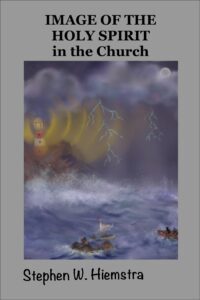Collecting Some Data

Unless you are circumcised according to the custom of Moses,
you cannot be saved. And after Paul and Barnabas had no small dissension
and debate with them, Paul and Barnabas and some of the others
were appointed to go up to Jerusalem to the apostles and the elders
about this question. (Acts 15:1-2)
By Stephen W. Hiemstra
Having sketched out a problem definition, the scientific method prescribes collecting data. Following Johnson (1986, 15), one should expect to return to the problem definition as data are collected and this new information suggests clarification of the problem definition. Johnson saw this feedback loop as an important philosophical contribution of the postmodern era.
The Jerusalem Council
One might describe the Jerusalem Council discussion of the circumcision of gentiles cited above as an example of such a feedback loop in the history of the church. It is interesting that it was Peter, not Paul, who presented the logic of this debate:
“And God, who knows the heart, bore witness to them [the gentile believers], by giving them the Holy Spirit just as he did to us, and he made no distinction between us and them, having cleansed their hearts by faith.” (Acts 15:8-9)
Peter points to the sovereign act of the Holy Spirit to bring gentiles to faith. He does not argue that it will increase membership nor does he commend Paul for his role in this evangelistic effort. Peter talked neither of programs nor of plans; rather, he looked to what the Holy Spirit was doing in the midst of the church.
The phrase cleansed their heart by faith echoes the prophecy of Jeremiah: “Circumcise yourselves to the LORD; remove the foreskin of your hearts.”(Jer 4:4) Peter’s insight here is no doubt the result of prayer and reflection on the rite of circumcision. We can, of course, advance God’s work in our lives by being open to spiritual formation, but we see no mention of this aspect of faith in Peter’s remarks
The Holy Spirit’s Work Today
If we were to imitate Peter, where do we see the Holy Spirit at work in the world churches today? While we cannot know with precision where the Holy Spirit is at work, statistics on the number of Christians and where they live show some definite trends.
Researchers at the Center for the Study of Global Christianity at Gordon-Conwell Theological Seminary observed in 2021:
“The concept of who a missionary is has evolved since the beginning of the twentieth century, making it much more difficult to assess how many missionaries there are in the world. The proportion of long-term missionaries from the Global North is on the decline (227,000 sent in 2021, which is 53 percent of the total of 430,000, down from 88 percent of the total in 1970). Since the 1980s and 1990s there has been a dramatic explosion of the number of short-term missionaries, particularly youth, who spend as little as a week outside their own cultural context.” (Zurlo, Johnson, and Crossing 2021, 16-17)
If the number of missionaries sent is a barometer of religious fervor, then these statistics suggest that the Global North is being displaced as the center of Christian activity by the Global South. This fervor likewise reflects the number of Christians in these regions:
“In 2021 a total of 1.7 billion Christians (67 percent) are found in the Global South. Projecting religious affiliation at the country level, it is probable that by 2050 there will be 2.6 billion Christians (77 percent) in the Global South.” (Zurlo, Johnson, and Crossing 2021, 19)
The Christian groups accounting for these trends are obvious:
“The Pentecostal/Charismatic movement is one of the fastest-growing trends in World Christianity today . . . This movement grew from 58 million in 1970 to 656 million in 2021. The Global South is home to 86 percent of all Pentecostals/Charismatics in the world.” (Zurlo, Johnson, and Crossing 2021, 18)
But for the Pentecostals and Charismatics, the number of Christians in the world would have been flat to declining over the past century. If we take these statistics as a measure of body temperature, we see definite tension between the embodied and the footloose manifestations of the Holy Spirit in our time.
References
Zurlo, Gina A., Todd M. Johnson, and Peter F. Crossing. 2021. “World Christianity and
Mission 2021: Questions about the Future.” International Bulletin of Mission Research. Vol. 45(1) 15–25 . Center for the Study of Global Christianity, Gordon-Conwell Theological Seminary. South Hamilton, MA.
Collecting Some Data
Also see:
The Face of God in the Parables
The Who Question
Preface to a Life in Tension
Other ways to engage online:
Author site: http://www.StephenWHiemstra.net
Publisher site: http://www.T2Pneuma.com
Newsletter at: https://bit.ly/Look_25 , Signup
The post Collecting Some Data appeared first on T2Pneuma.net.



